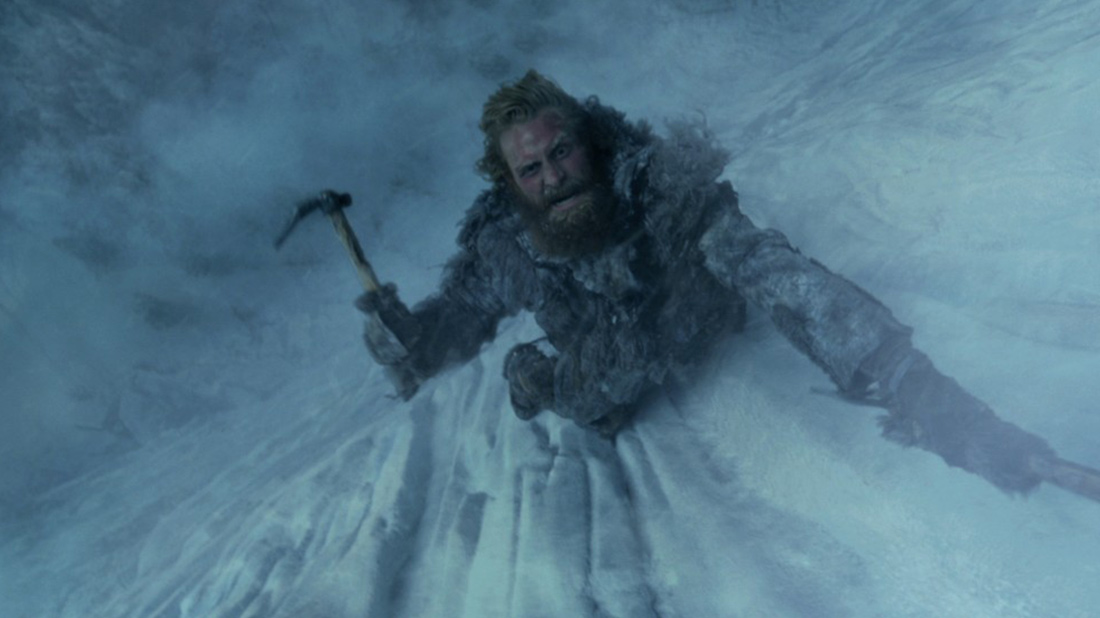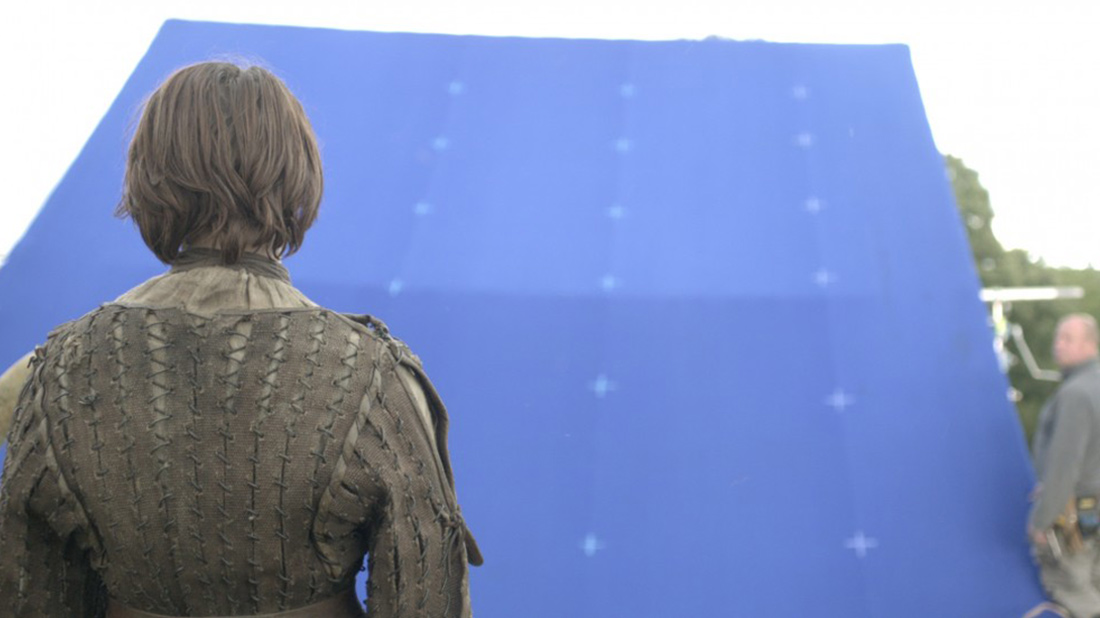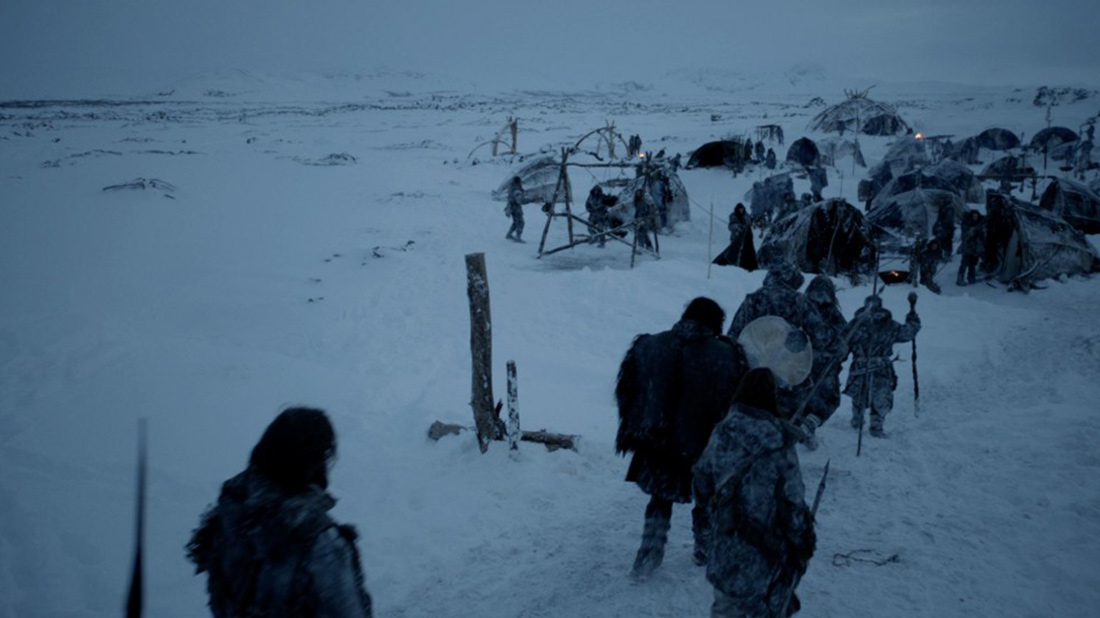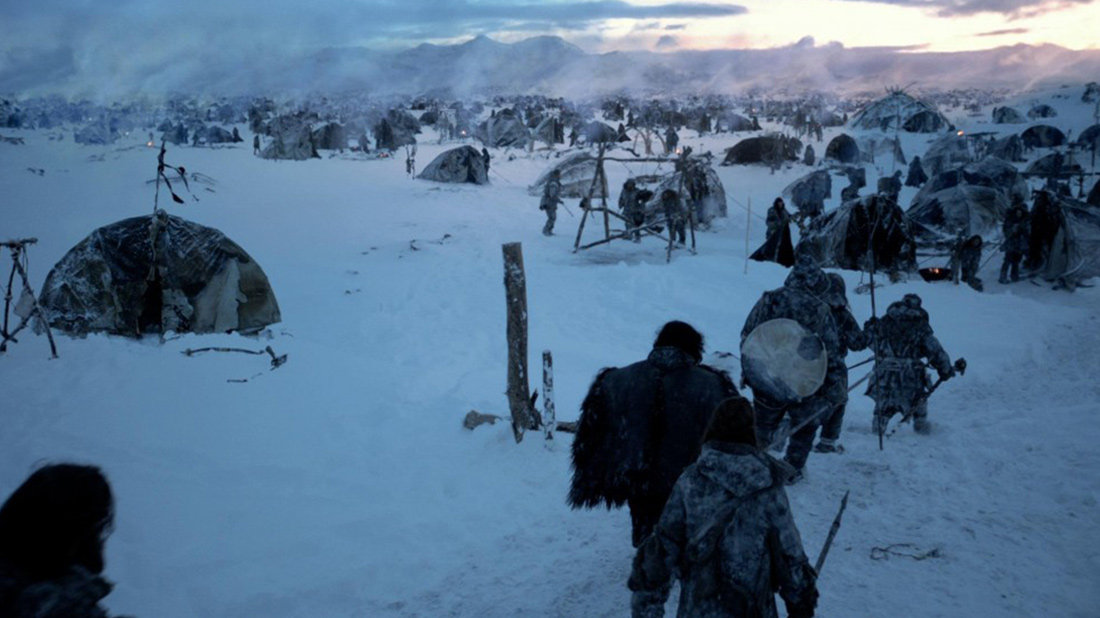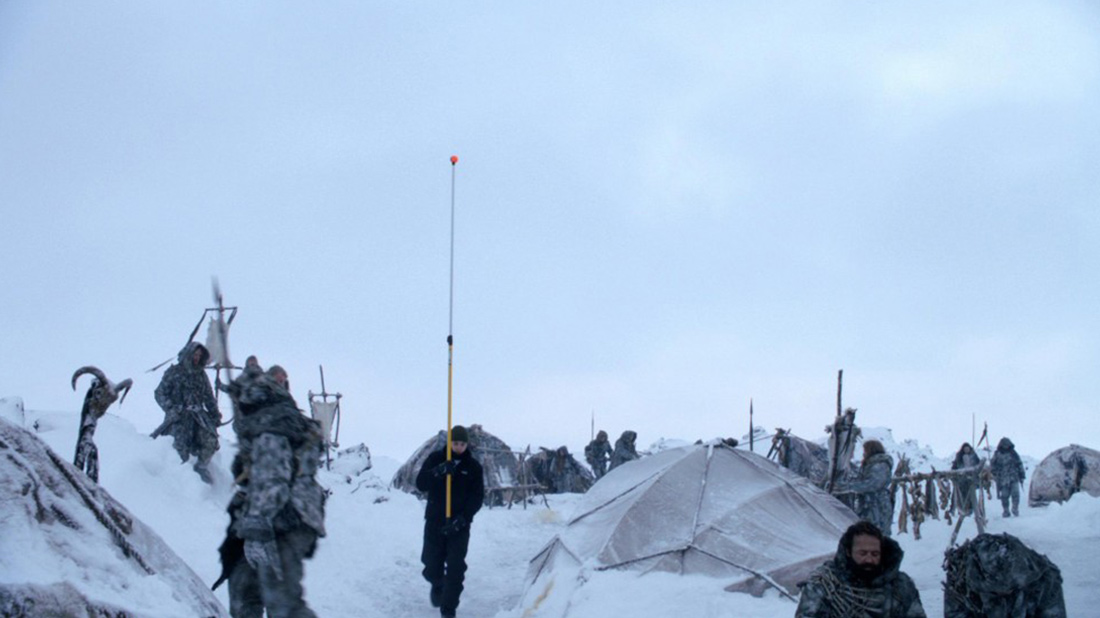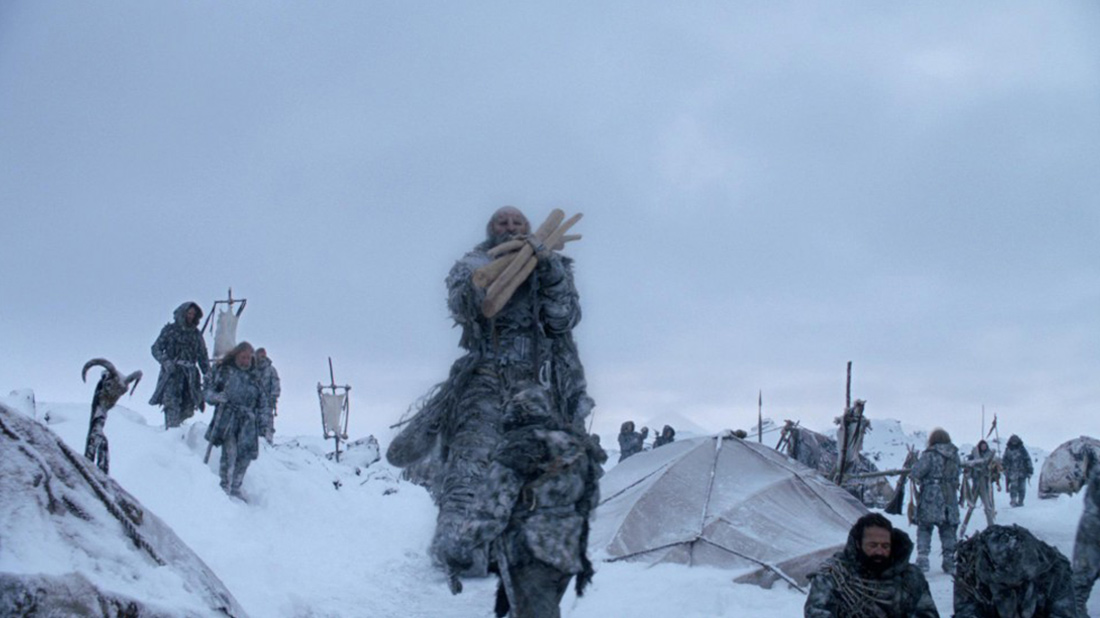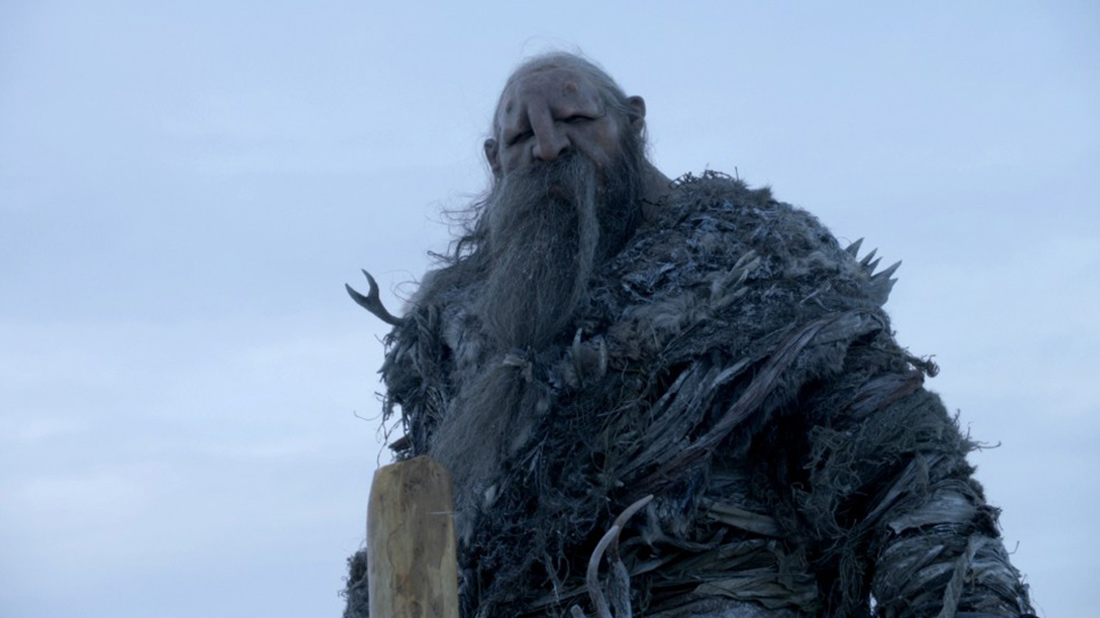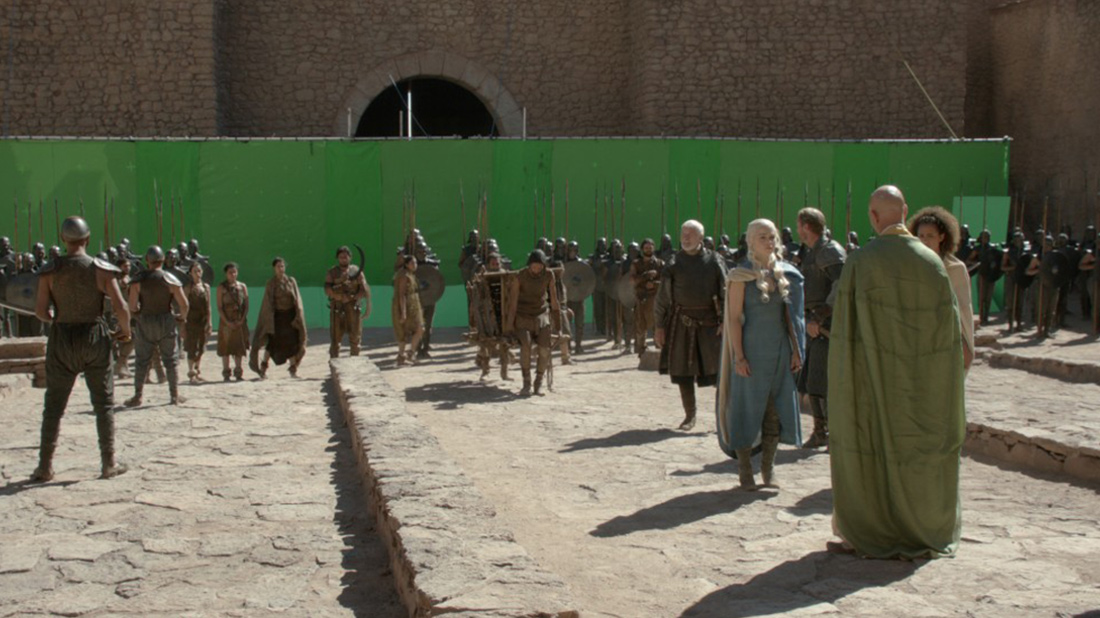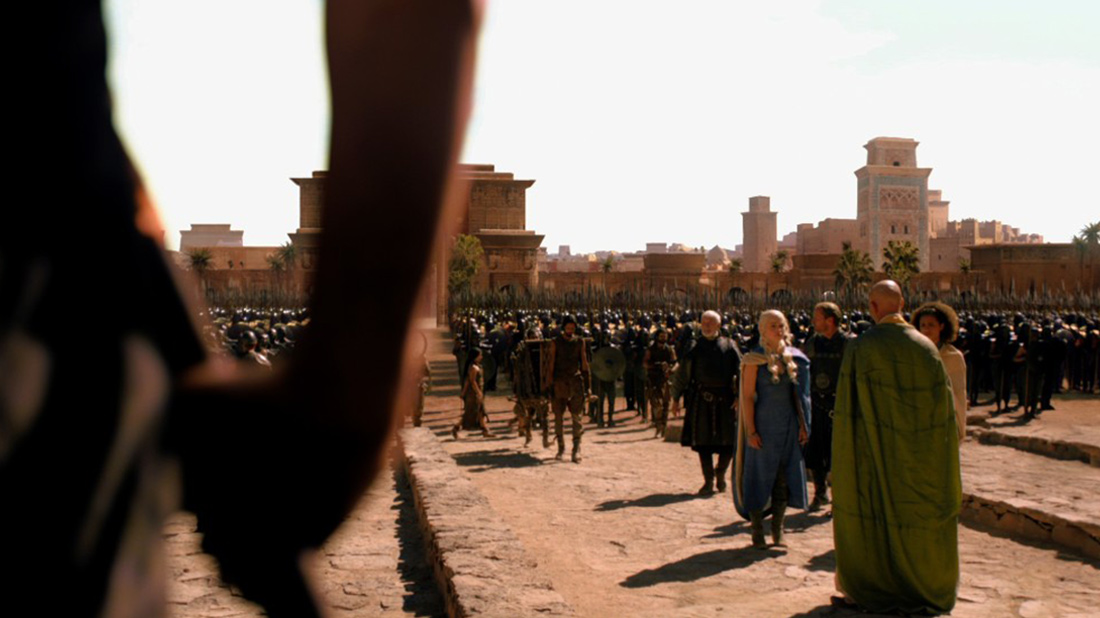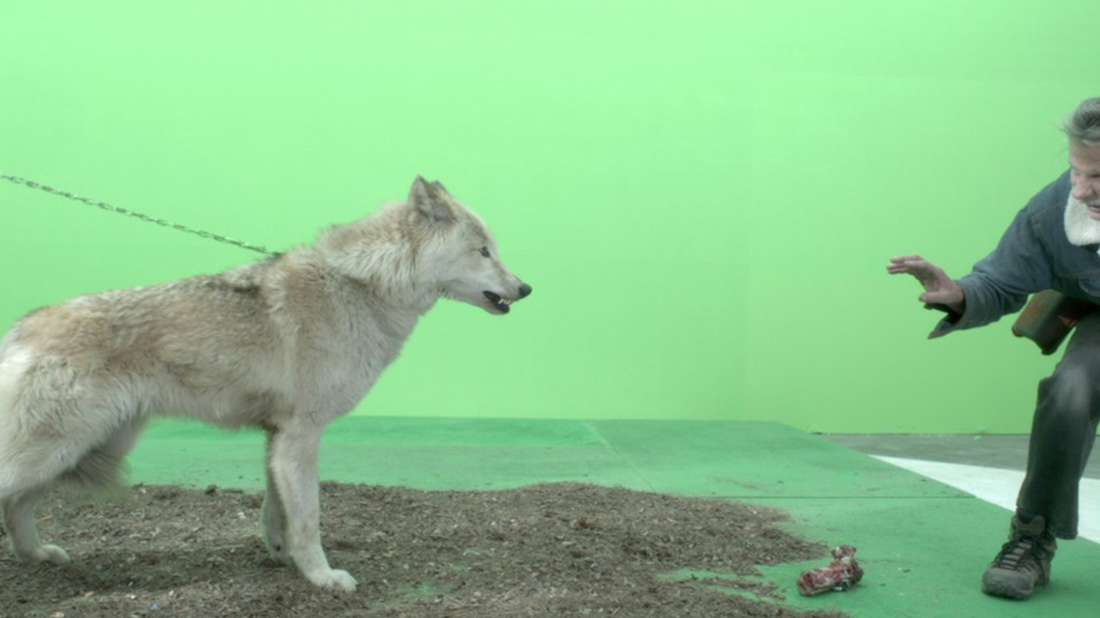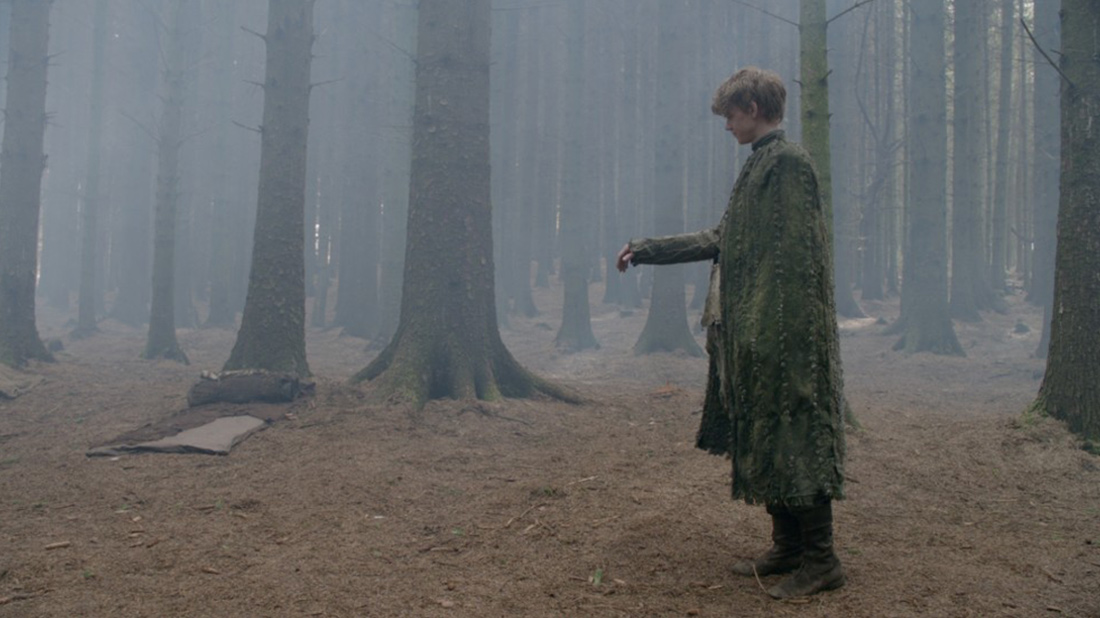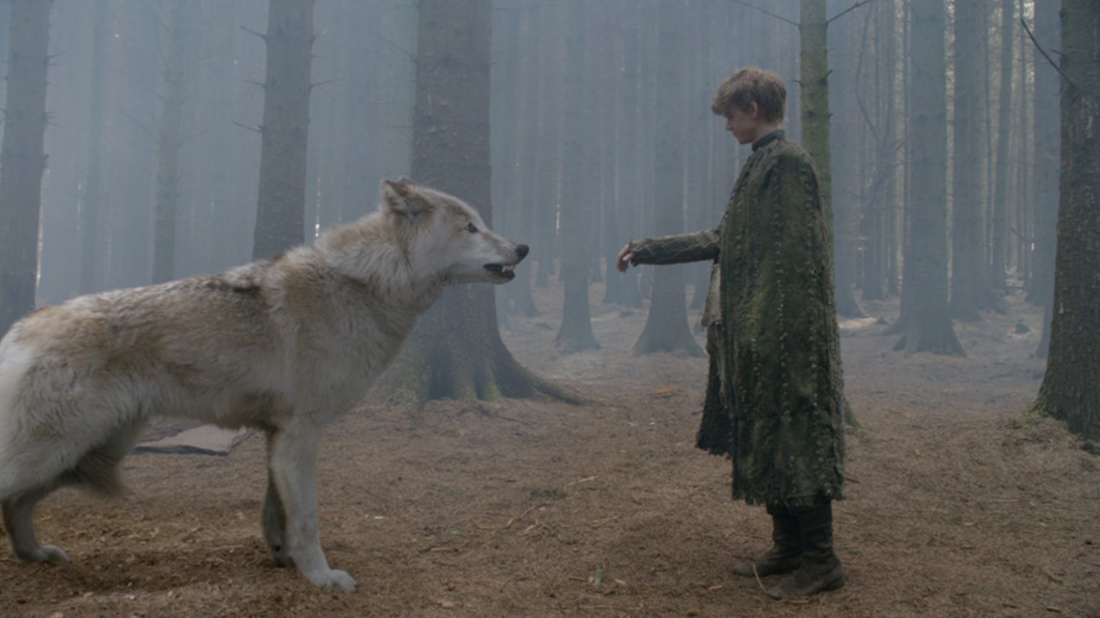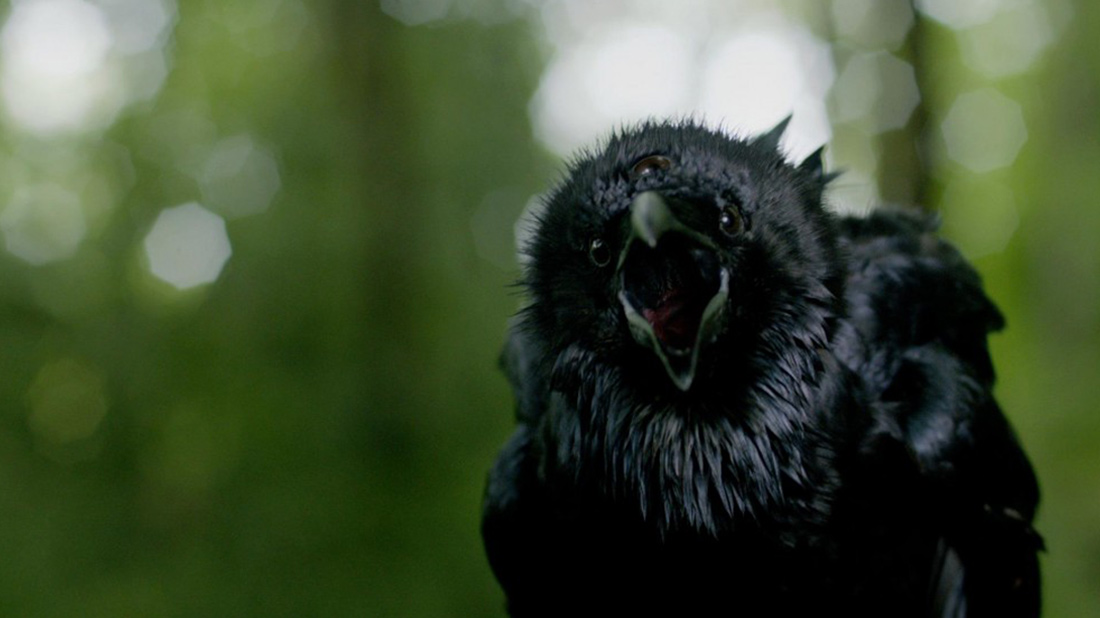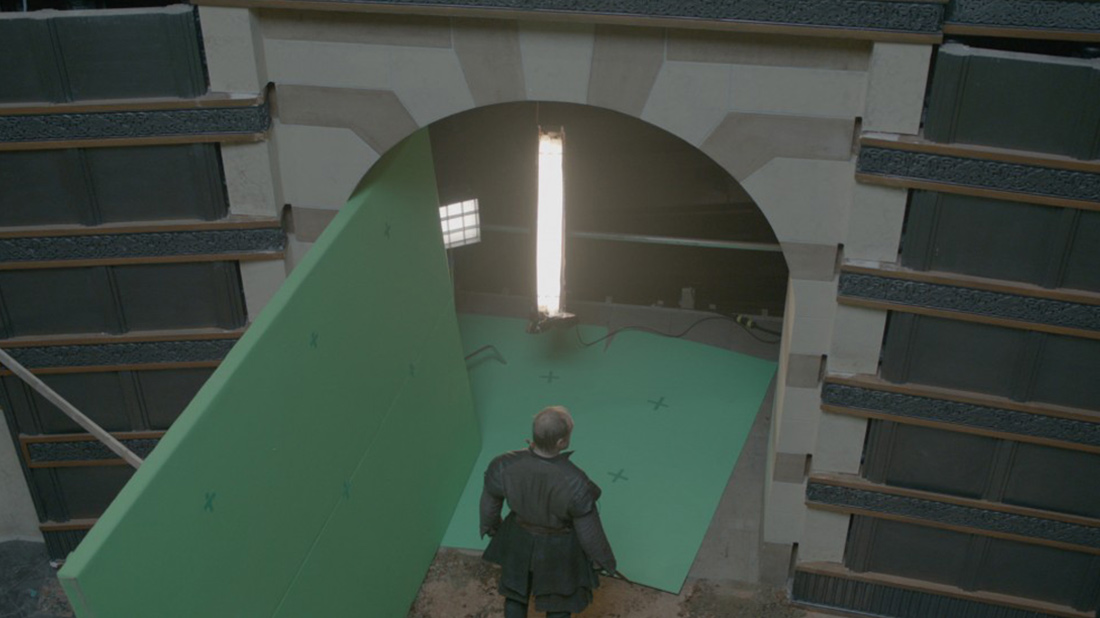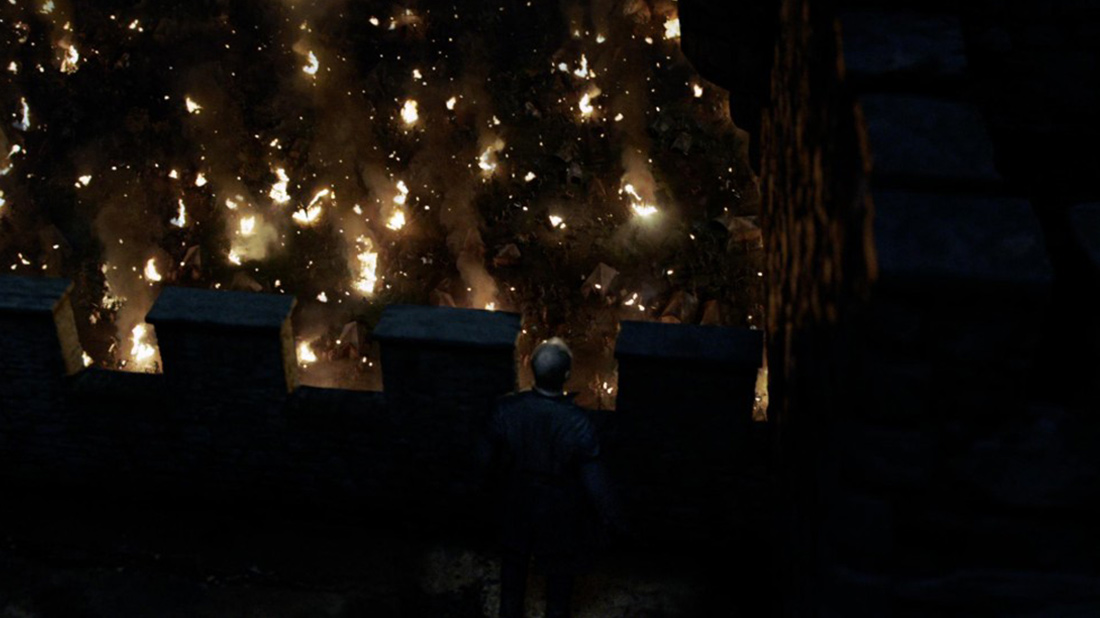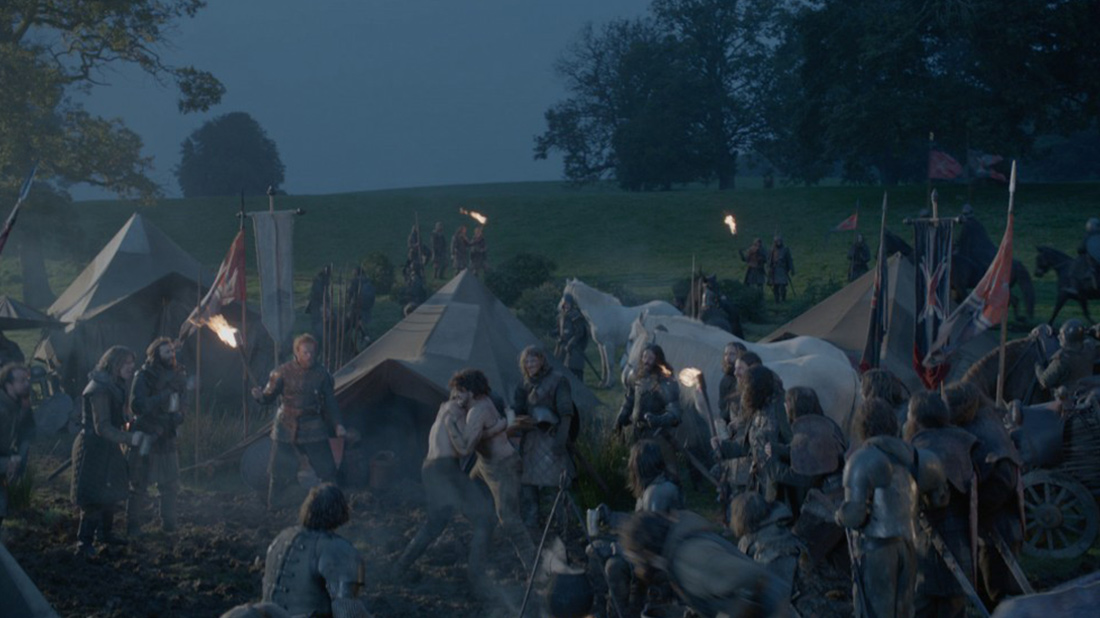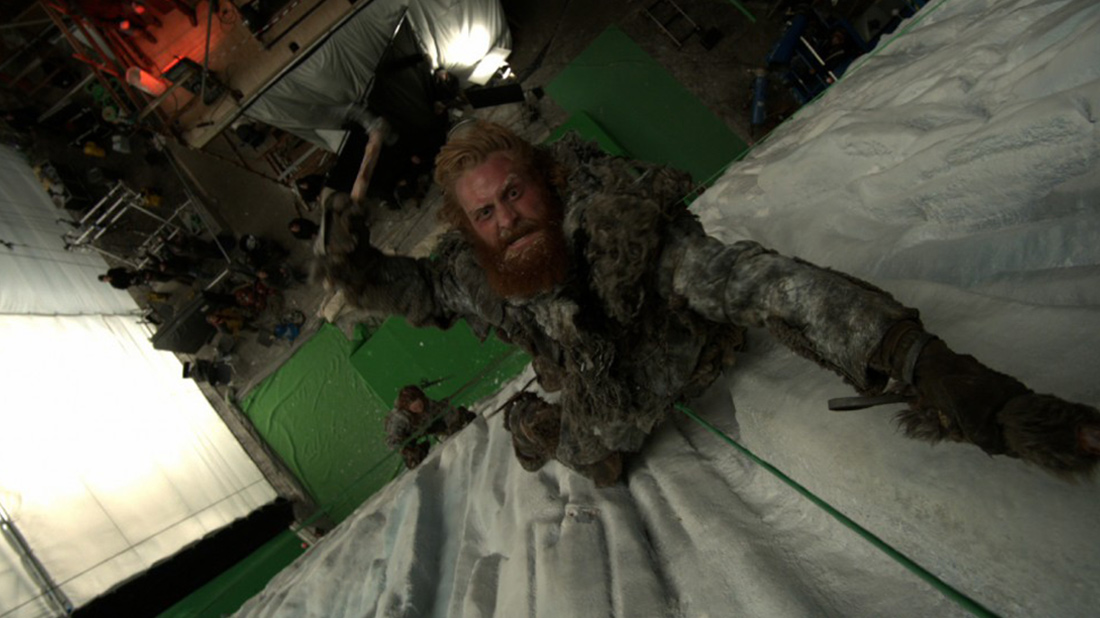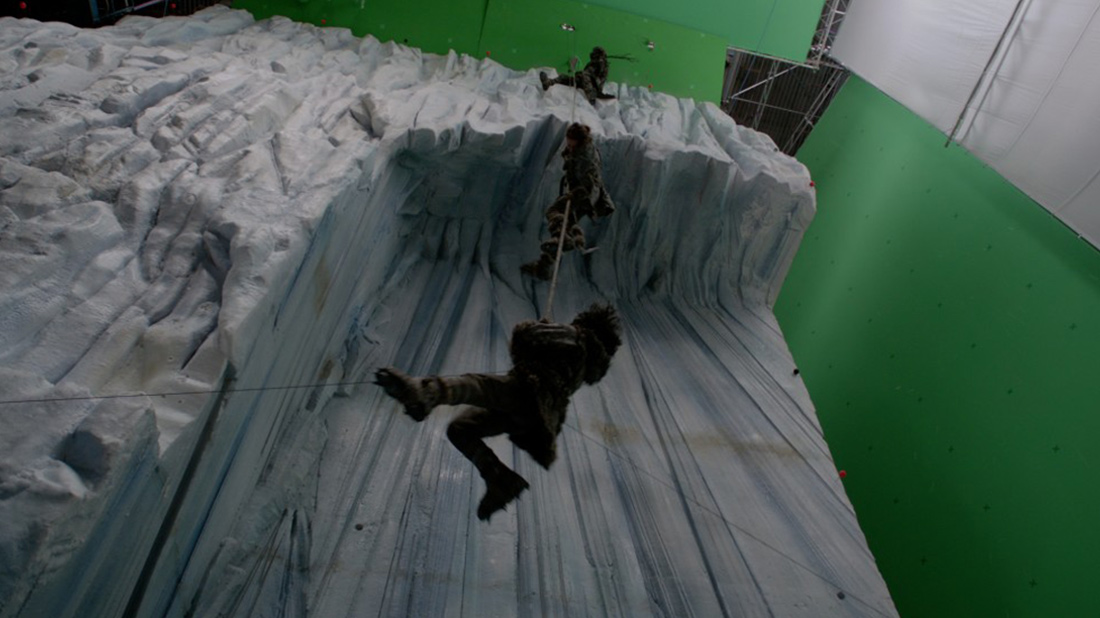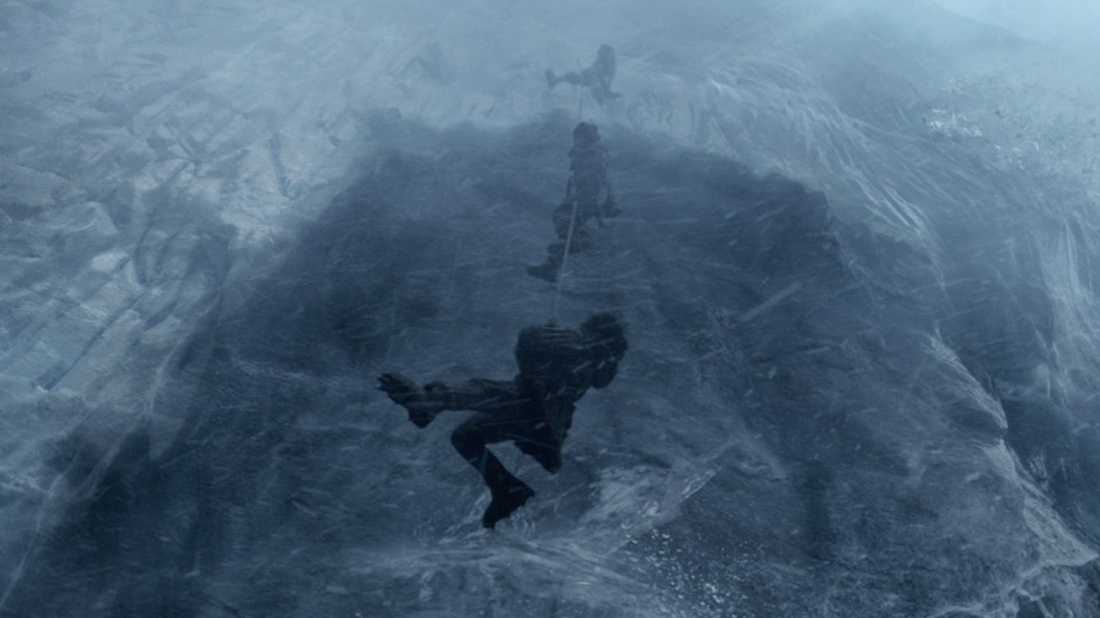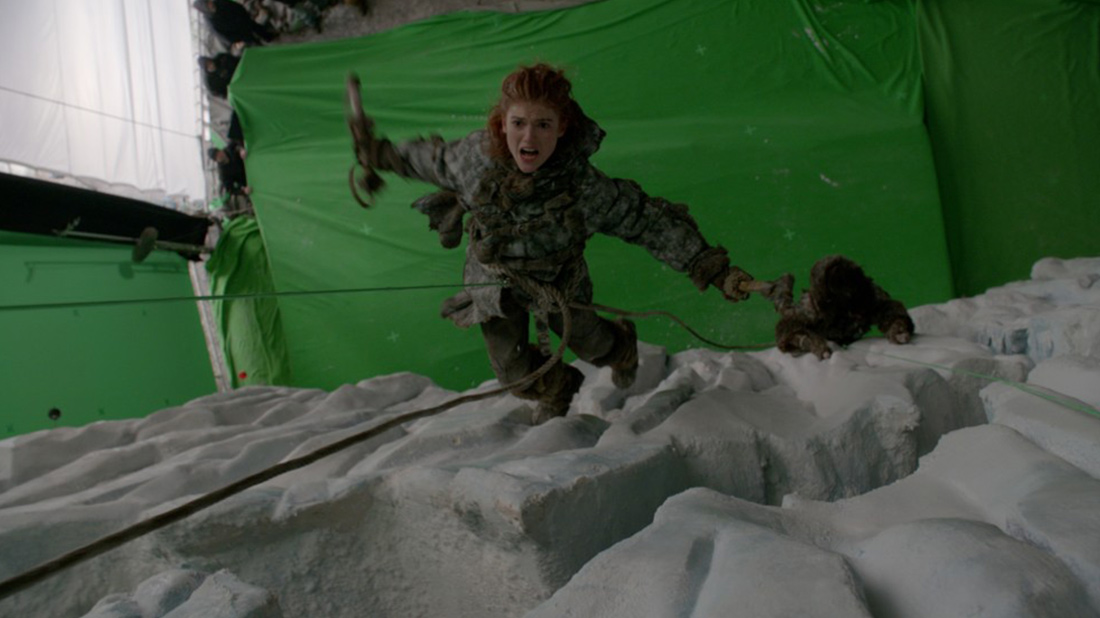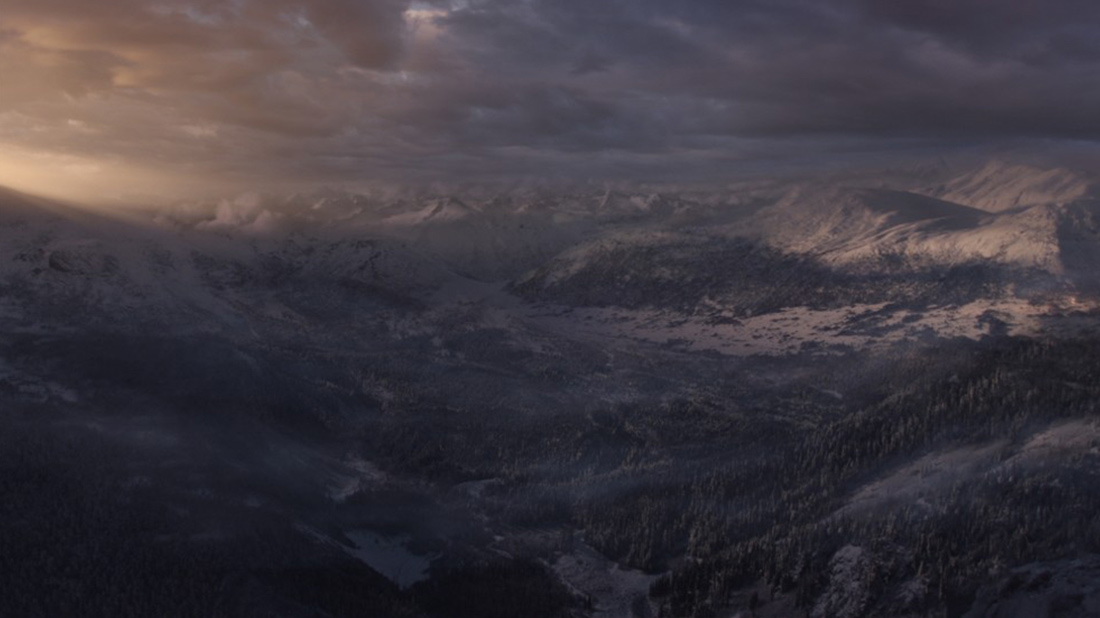After explaining the work of Spin VFX on the TV series THE BORGIAS, Doug Campbell has worked as a senior compositor on THE TWILIGHT SAGA: BREAKING DAWN – PART 2 and JACK REACHER. He now talks about his work on the third season of GAME OF THRONES.
How did Spin VFX get involved on this show?
For years, SPIN has been developing a relationship with HBO because their shows are very provocative and they bring cinematic quality to Television. GAME OF THRONES is especially dear to us as most, if not all, of our staff are huge fans and given that level of passion, we knew that the synergy would be great. We approached HBO right when they were developing the GAME OF THRONES and two years later, the opportunity arose for us to work together.
How was the collaboration with the various directors?
Our collaboration was mainly with the VFX Supervisor, Joe Bauer and VFX Producer, Steve Kullback, who maintains creative integrity of the show.
What was their approaches about the visual effects?
It was of the utmost importance to maintain feature film quality and so much of the process was typical of working on a large scale film. Productions’ art department created very beautiful concepts for Season Three and there was also a lot of great reference material from earlier seasons to draw upon.
Joe Bauer, the VFX Supervisor for production, had also done some very nice photoshop work and collected a large quantity of additional reference material to illustrate where he wanted to go with the shots. Additionally, he supplied detailed previs which was used to aid us and to drive the motion control cameras. This all helped tremendously.
How was the collaboration with Production VFX Supervisor Joe Bauer?
Joe was great to work with. He has a great eye and inspiring creative direction. Without him we would not have gotten the results we did.
What have you done on this show?
Mance Rayder’s Camp and the Giants within it, the flocks of ravens and the three-eyed ravens, Eagles, Dire Wolves, 1000’s of Unsullied Soldiers, many set extensions, The Twins, the Red Wedding sequence, the Base of the Wall, the entire scaling of the Ice Wall sequence, and the top of the Wall.
How did you extend the Mance Rayder’s Camp?
Joe had shot many different variations of the tents, burning fires and people walking on greenscreen. He then did some preliminary work in editorial on what he’d like to see here. We used that direction and created the matte painting for the background mountains and sky, the FX department created atmospheric and campfire smoke, and comp created a 3D environment in Nuke with all the various 2D elements.
Can you tell us more about the giant that walks in the camp?
Oh he was great. We were given BG plates with a person running through the giants path of action, holding a long stick for actor’s eyelines. We also received motion control filmed greenscreen plates of an actor in giant costume and makeup. This technique provided the up scale in the photographed element to make the actor appear very large. We then pulled the keys, graded and stabilized/tracked the element to sit in the shot nicely.
We also animated the expression on the giants face with spline warps and added explosive ice elements for when he pounds the whale bones into the ground.
How did you created the impressive Unsullied Army shots?
We started the shot in grey shaded 3D mode using light weight geo for the environment and bounding boxes to represent the Army. Once camera moves and layout were approved by production we went forward with generating projected matte paintings and creating the Unsullied Army in Massive. FX simultaneously created dust generated by the feet of the soldiers and smoke generated by the piles of burning bodies. We then comped this together with the Dany plates to complete the shot.
Can you tell us more in details about the crowd creation?
The Unsullied Massive agent was modeled and textured to quite a high level of realism but was still light enough to render a couple of thousand soldiers in a shot even with indirect diffuse / GI lighting. An animation library of various « marching » and « standing at attention » cycles was created for import into the Massive brain. Look dev and lighting was done utilizing Katana and Renderman. Renders were going to be quite long on some shots and we were asked to do some extra shots as well so we had to think very efficiently to get it all done on schedule and still be able to make changes if need be. Fortunately changes were minimal and everything went through as planned.
How did you handle the Dire wolves shots?
Dire wolves were wrangled wolves on a greenscreen stage shot with scale built in to represent a 30-50 % larger animal. We then keyed, rotoscoped, tracked, colour corrected and comped them into the plates.
Can you tell us more also about the CG crows?
We built a high resolution CG raven with a few levels of detail for use with the Three Eyed Raven shots and for the flock of thousands chasing Sam and Gilly. For the ravens third eye, we tracked just the head of the high res model to a live action raven plate and found that simply placing an eye on the existing head didn’t read well to camera. We ended up replacing the entire top of the head so it had enough substance to hold the third eye on an appropriate forward facing angle.
The flock chasing Sam and Gilly was a shot the team enjoyed realizing. We hand animated many paths of hero ravens and used that to drive Massive to populate the thousands of flyers between them. Hi res Ravens with pseudo-dynamics on feathers were used at render time to give wind affected detail to the foreground birds, and background birds used lower levels of detail. For all our CG shots we used Maya for modeling, rigging and animation, Mari and Mudbox for texturing, PFtrack for matchmove, Katana and Renderman for renders and Nuke to comp.
How did you approach the set extensions for the Twins especially for the sequence on top of them?
Set extensions were fully 3D models lit with HDRI images taken on set. The wide shots had low poly geo and the closer top of the Twins models had a very high poly count and very high texture detail.
What was the real size of the set for this sequence?
The greenscreen set was just floor and stairs big enough for the character of Roose Bolton to perform on. We created a high resolution CG model that lined up precisely to Lidar of the set.
Can you explain in details about the Twins creation?
The basic shape of the 3D was generated by production’s previs department for use in the shooting of the plates. The previs was then supplied to us and we added the details, textures and matched dimensions to fit precisely with the Lidar. The areas beyond the castle were matte painted and projected onto lightweight geometry. The view from the top of the Red Wedding massacre was a very large composite of many live elements of tents, trees, fires and people running around frantically, mixed in with CG smoke / fire elements and a matte painted BG.
How did you handle the various weather and time conditions for the Twins?
In addition to using HDRI images shot on set, which provided us with great rendered images to work with, we relied on our compositing department to add smoke, fog, fires etc to make the realism perfect.
Let’s talk about the big sequence, the Wall climbing. What was your feeling while reading this sequence on script?
Working from a breakdown, there were no known absolutes before getting a cut of the sequence, so in order to troubleshoot for any situation, we prepared for seeing a large portion of the Wall and potentially big camera moves. This meant we needed a fully CG environment that could render efficiently.
Can you tell us more about the shooting of this sequence?
Production had a 50’x35′ portion of the ice wall constructed for the live action to take place. There was also a section of the set that was built on a type of elevator which quickly drops down for the shot where Ygritte and Jon Snow fall during the ice shear event.
How did you proceed to create this huge environment?
We were supplied set Lidar taken before and after the ice collapse which we extended with a highly detailed 300’x300′ CG wall section. For anything viewable beyond that we had a lesser detailed section of 700’x3200 ft covering all possible camera angles. Mudbox and Mari were used to match and blend the CG wall into the Lidar of the set. It required a huge amount of detail as the Lidar of the smaller 50’x35′ set alone produced a few million poly’s. This is why on the establishing shot, where the camera finds the initial 16 climbers on the wall, we had a particularly tricky time. We had an 5 mile section of CG wall and we fly into a tighter framing showing the 4 groups of 4 on ropes, shot on the actual set piece. The detail needed to displace the closer CG ice blending into the set meant huge poly counts but we utilized Rendeman’s brickmap and GI baking capabilities to achieve this with reasonable render times.
Particle sims for the blowing snow were required for all the climbing shots and especially for the upper level sequence where a snow storm had started. We also ran collisions of these particles to interact against the wall surface and sometimes the climbers themselves. We were also tasked with adding ice sheen and blowing snow to all originally considered non-VFX shots for continuity. We tracked the plates and rendered the set Lidar which was textured to be shiny ice. Comp then added those elements to all the plates with the original set piece on each shot of both the climbing and top-of-wall sequences.
Can you explain in details about the destruction of the ice wall?
We did a concept of what the post destruction would look like from afar and used Houdini to slice out and break up our original ice wall model in those affected areas and run the simulations and particle emissions. A new model was created for the fresh ice revealed behind the falling chunks. We decided to run one large master setup in which we imported all the shot cameras for the sequence and timed the various sections to fall in front of the appropriate cameras. It was a large sim at over a 1TB of cache data, it was repurposed for many shots as we modified camera animation.
How did you create the digital doubles for this sequence?
Rather than digi doubles, we used greenscreen plates with stuntmen falling onto crash pads which were stabilized and re-animated on 3D cards in comp.
Can you tell us more about your work for the top of the Wall?
We had another Lidar of the set piece used for this sequence with which we matched a new CG top-of-wall model to. We thought we would be projecting matte paintings for the most part in this sequence but it ended up being fully CG for the connecting ice wall extensions and matte paintings for the further wall and sky. All the matte paint work for the North, South and West views were built for 3D projections including the clouds and sun rays. The FX department helped with the finishing touch by providing blowing and shearing snow elements.
What was the biggest challenge on this project and how did you achieve it?
I would say creating the Wall was the biggest challenge. Figuring methodology on how to build it, blend it into the set, prepare for any camera angle, art direct it at any point in production, look dev and render it. It was a massive undertaking that ultimately paid off with the creative on screen.
Was there a shot or a sequence that prevented you from sleep?
Feature film quality VFX on a television turn around can often cause sleep deprivation. (laughs)
What is your best memory on this show?
Collaborating with Steve Kullback, Production VFX Producer and Joe Bauer, Production VFX Supervisor was inspiring. Consistently delivering award winning work is no easy feat. they set a high bar and we’re thankful to be part of their team. Working with my friends and colleagues at Spin VFX was also very rewarding. During crunch time everyone bands together to deliver. It’s a great environment.
Will you do something different on your next project thanks to your experience on this show?
Every project teaches you something. That’s what I love about this business. It’s never the same.
How many shots have you done?
We delivered close to 250 shots.
What was the size of your team?
We had approximately 50 artists and support staff.
What is your next project?
SIN CITY 2.
A big thanks for your time.
// WANT TO KNOW MORE?
– Spin VFX: Dedicated page about GAME OF THRONES (Season 3) on Spin VFX website.
© Vincent Frei – The Art of VFX – 2013


